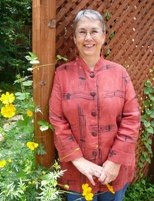Friday, October 21, 2011
Letter Writing at Ghost Ranch
Letters.
How they are carried and delivered is not the issue. Rather, who composed them and to whom is what drives letters through centuries and what propels them now. That and the need for intimacy/honesty, plus a natural linguistic music.
Last week in our class, The Art of Letter Writing, a wonderful mix of humor, drama, and imagination –
Mary Claire explains to her children exactly why she bought (without their advice) her new Dodge Journey.
Katie writes her daughter on the trials and triumphs of a long marriage.
Val writes to Ansel Adams asking if there is not a secret behind his famous shot, Moonrise, Hernandez.
Susan Barney Jones gives me permission to share this fine poem.
1001 West Mulberry Street
This is a letter to my childhood home.
This is a letter to Mulberry Street
to its wide paved expanse
beginning at the eastern edge of town
ending at the hogback dotted with yucca
to ghosts of Nash, Plymouth, Chrysler, Ford
parked at the curb.
This is a letter to seven trees planted on the lot
tall sprawling blue spruce, macintosh
and wealthy apples, delicate Chinese
maple, prized and protected gingko,
aggravating Kentucky coffee putting
up suckers, spicy Russian olive.
This is a letter to plants left behind.
This is a letter to the table in the kitchen
slam of screen door, splash of faucet
water, decaying picket fence and
broken gate lock, tilting clothesline pole,
empty wooden dog house, abandoned
antenna on the roof.
This is a letter to things forgotten.
This is a letter to three bedrooms
one crowded bath, sticking metal
sliding closet doors, ceramic
windowsills, casement window cranks,
to mildewed shower curtain, damp towels,
chips of soap in a cracked dish.
This is a letter to daily life.
This is a letter to washer and dryer
shelves of glass jars, canned
applesauce, homemade jelly
and pickles, plastic boxes of sliced
peaches in large white freezer
to stacks of magazines, folders of school
papers, dress-up clothes and garment
bags, nails and tools, photos and
slide carousels
to dusty basement
to past and present.
This is a letter to all a house can hold.
Thanks to Ghost Ranch, the Fall Writing Festival team, and to my wonderful class!
Thursday, August 18, 2011
The Art of Letter Writing
The Art of Letter Writing
Ghost Ranch Fall Writer’s Festival
October 8 – 13, 2011
When I told a friend that I was going to offer a class at Ghost Ranch Fall Writing Festival called The Art of Letter Writing, the truth as he saw it slipped out before he had a chance to censor himself. “If that class makes it will be full of old people.”
 He teaches college kids so perhaps he doesn’t realize the pleasure and vitality of the over-fifty set. (these are my people, friend!) Besides, have you noticed that young people have taken up knitting, canning, gardening, pin-hole photography and the ukulele, all antique arts now born again with a 21st century sensibility ? Letter writing may be the next new thing.
He teaches college kids so perhaps he doesn’t realize the pleasure and vitality of the over-fifty set. (these are my people, friend!) Besides, have you noticed that young people have taken up knitting, canning, gardening, pin-hole photography and the ukulele, all antique arts now born again with a 21st century sensibility ? Letter writing may be the next new thing. Letters stuffed into an envelope and sent at the current rate of 44 cents could make a comeback, not for expediency sake, for sure, but for art’s sake. Whoever turns up in my class, of whatever age, will be invited to think about letters and why they matter, both historically and in the current context.
Letters from prison, letters from the road, from wars, and letters of comfort to parents, to children, and love letters. We’ll read letters and write some of our own.
What role did letters play in keeping alive the marriage of Georgia O’Keefe to Alfred Stieglitz over such long separations?
The writer Leslie Marmon Silko says to the poet, James Wright, after taking up a whole letter describing the personality of her rooster in the yard: You never know what’s going to happen in a letter.
Charles M. Russell had few grammatical skills but he dashed off illustrated letters and post cards, keeping friendships alive with little more than a savvy sentence or two.
The letter is one of the most familiar forms of communication, and one of the most intimate. Letters can be exuberant, sad, bossy, philosophical, fragmented, long-winded, and funny, but they are most enduring and artful when they are revelatory and honest in personal expression.
Charles Lamb, the 19th century essayist and avid letter writer, said writing a letter is like whispering through a trumpet. Write a letter today. Let it whisper or let it trumpet. Please, let it do more than tweet.
Subscribe to:
Comments (Atom)



